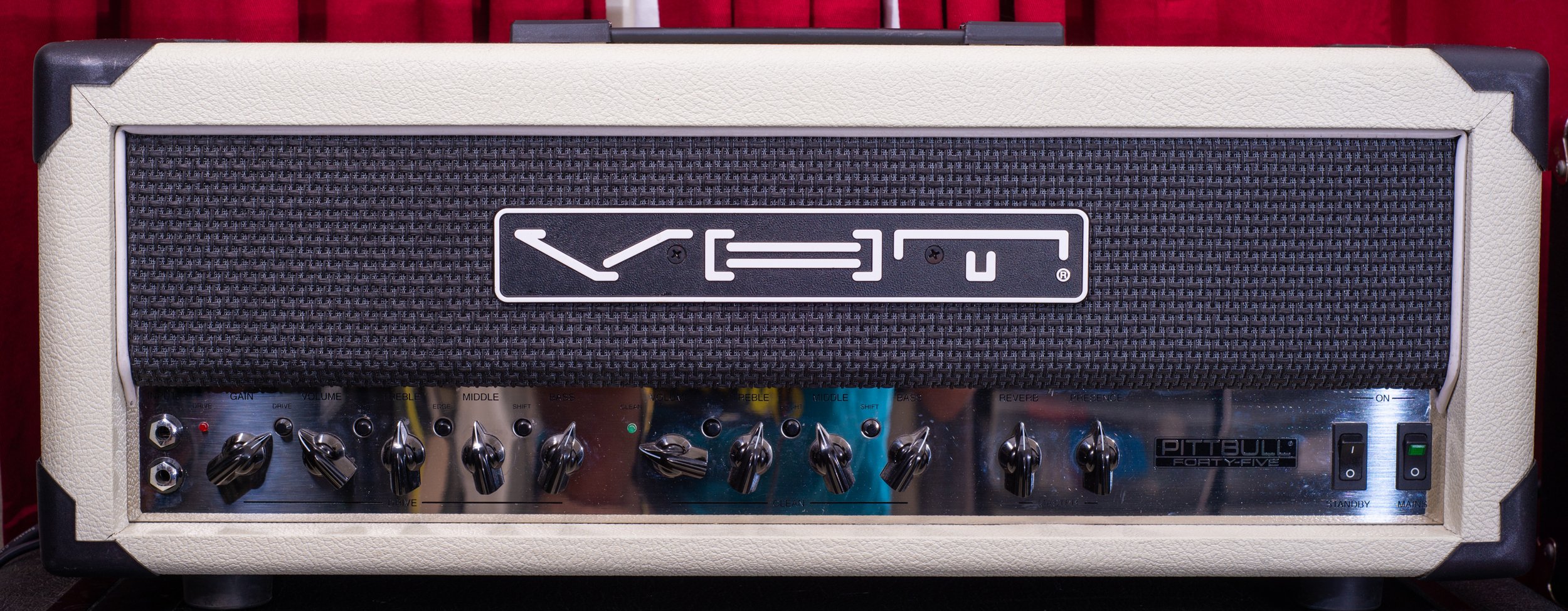A few things lined up recently and several things I purchased all happened to arrive on the exact same day - so I took this opportunity to start a new series of videos. They will probably be a bit inconsistent since it depends on when/how often I get new gear, but I think it’ll be cool to do a more casual video whenever I get some cool new piece of gear and talk about it briefly before doing a comparison video or deep dive review.
Of course, this is a lot at once this time as I got both a guitar and two amps all at once. Here’s the video, but keep scrolling for some pictures and some other thoughts on the gear.
First item: a 1987 Kramer Baretta. This one sat on Reverb for a long time and had a few price drops, and I have to give the seller a lot of credit for an accurate representation of the guitar. It is playable, but the frets have been leveled and it is probably due for a refret job very soon. The body has some surface scratches made very clear by the black finish but no major damage, and the neck is really sharp. Sadly, the original JB is missing and replaced with a very cheap pickup from Amazon or similar, and the original floyd rose is missing too - but luckily it was just replaced with a more recent German made OFR. The pickup was wired very strangely - sounded like a single coil or like it had a short - so I swapped that out for a black/white SH-10 Full Shred that I’ve had waiting for a guitar just like this for a while now and it sounds fantastic.
Second: Mesa Mark IV… again. I’ve been really missing my Mk IV head, so I’ve been on the prowl for another. This was listed on Guitar Center used as a head, but sadly it is a combo on arrival - I’m a bit disappointed by that but in a rare act of customer service, the person shipping the amp at GC actually called me and let me know that it was a combo in advance and asked if I wanted to cancel the order! I really appreciate that but I went through with it anyway, since it was described to be in excellent condition.
And wow! That was not a lie either - it is in truly impeccable shape with the original cover too. Sadly the footswitch is missing - that’s very disappointing because they are pretty expensive to replace but we’ll see what I can do about that. This is the “short” combo which means some controls are on the rear panel (like the mid gain/harmonic mode switch) and the factory speaker is a Celestion Black Shadow. I’ve heard lots of praise for this speaker but never tried one - my initial impressions are very positive though. This particular amp also has a very high serial number, much newer than the head that I had, and puts the date closer to the 2008 end of things (likely this was made 2006-2007 or so). Mark IV production ended in 2008 so it’s nice to have one that is a full decade newer than the one I had before, as far as component life goes.
Last: I’ve been looking for a Peavey Triple X or JSX for a little while but waiting for the right deal to come up - these amps were regularly available for 250-350 bucks or so for years so I found it hard to justify paying the current prices of 500+ for them. Luckily, I spotted this one online for only $299, which is about as good as it is going to get amp shopping in 2022, especially for a USA made tube amp like this. I’ve only played it a little bit, but it is super gainy and sounds really great so far. Bang for the buck, this is hard to beat, and I’d argue that in the right hands a skilled player with an amp like this could sound just as good as any expensive boutique amp (within the limitations of what the amp is designed to do of course - high gain). The active EQ really broadens the range of the amp as well, and even though it’s super cheesey, the front panel “girls” grille has grown on me in more of an ironic/nostalgia kind of way (these amps were all over the place when I was first learning to play guitar).





